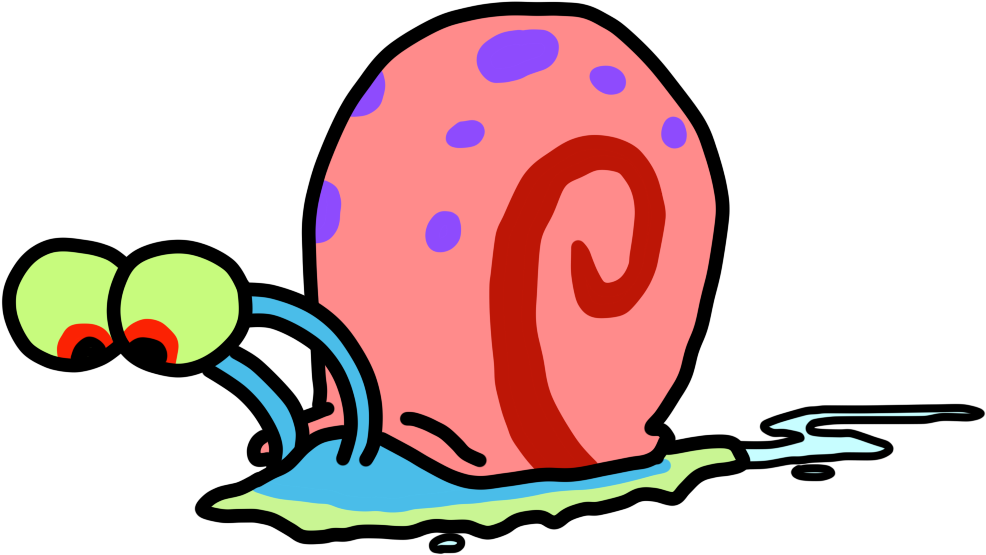A combination of first-past-the-post and winner-take-all systems for nearly all elections, coupled with the Electoral College for the presidency.
First-past-the-post is a system wherein only the plurality candidate wins. Here is an example:
-
For a given seat, be it a president, senator, representative, or local office, assume Party A wins 40%, Party B wins 30%, Party C wins 20% and Party D wins 10%.
-
Despite a majority of voters preferring someone other than Party A, Party A wins and everyone else loses. This is first-past-the-post voting, and with no other considerations given to the other votes, makes it a winner-take-all system.
-
The majority aren’t happy with this, but the other parties continue running their candidates and continue losing because Party A wins the greatest portion of votes each time.
-
Because the other parties can’t even win any power, there’s no “coalition” or “alliance” that can be made to shut out Party A.
-
Party B decides to take advantage of everyone’s dissatisfaction. They adjust some of their policies to be more favorable to Parties C and D to attract some of their voters. This is the closest thing to a “coalition” that the first-past-the-post system can achieve.
-
During the next election, Party A wins 40%, party B wins 42%, Party C wins 12%, and Party D wins 6%. Party B assumes office, starts fulfilling their agenda, a lot of their voters aren’t completely happy, but at least Party A isn’t in power.
This illustrates how only 2 prevailing parties come to be, because it is not possible to win an election in the US unless you obtain the most votes.
For the presidential election, the electoral college is a winner-take-all system determined by the limited pool of national electors.
-
Like all other offices, the presidential election is still first-past-the-post. Only the candidate who wins the most votes wins the election, everyone else wins nothing.
-
For the presidential election, the only votes that matter are the electoral votes. Each US state is assigned a certain portion of electors which is based on population but is often very disproportionate in practice (due to a capped elector total nationally, and minimum elector thresholds for less-populous states).
-
Each elector is 1 vote for the president, and the electors are supposed to vote based on how the citizens of that state voted. This is the distinction between the electoral vote and the popular vote.
-
With limited exception, this is also a winner-take-all system, meaning all the electors for a given state must also vote in line with one another. If a state has 10 votes and the election is 51% Party A and 49% Party B, all 10 electors must vote for Party A even though it’s almost a clean split down the middle for the popular vote.
-
This results in cases where even if a majority of voters nationally prefer Party B, Party A’s candidate could still win because they won more electors.
-
Accepting the system is unfair but being unable/unwilling to change it, the two prevailing parties try to game the system any way they can to swing things in their favor. They identify a handful of states where leads are very narrow and focus all their attention there. These are swing states.
Why do people hate third parties/why do they never win?
-
For the reasons illustrated above, a third-party can never win any significant amount of power under the current system.
-
When a race is even remotely close, small factors like people who choose to vote third-party instead of supporting one of the other two parties can turn the tide in a swing state, and thereby turn the tide nationally.
-
There is a trend of third parties getting financial/promotional support from political groups that are actually opposed to their policies, but are using the third party to attract votes away from their main competition for a given seat. This is called the spoiler effect.
This outlines how, under the current political structure of the US, there can never be a successful third party in government outside of local grassroots elections, and why there is so much hostility towards third parties. Third parties aren’t there to win, they are propped up by larger political interests who use them to take votes from their competition.
This is why you may often see “A vote for a third-party (e.g. Jill Stein) is a vote for Trump” during this election, because the Green Party is being primarily supported by right-wing interest groups this election despite being one of the more “leftist” options on paper.
The only thing I would add is that with the electoral system, it’s not the candidate with the most electoral votes that win, it’s the candidate who gets half+1 votes (270 or more currently)
If candidate A wins 250 votes, candidate B wins 200 votes and candidate C wins 88 votes, candidate A does not win. If there is no winner, the house of representatives votes for president, each state getting one vote.
Another reason why third party presidential candidates are never serious contenders.
can we just set up a bot that does nothing but reply with these two comments to every “why no 3rd parties bro” question. We’ll turn it on three months before every US election and let it travel around lemmy servers. then turn if off until this whole cycle repeats.
Don’t forget a little note saying "Think this is stupid? Vote for Ranked-Choice Voting!’
Wait, why aren’t you fixing the voting system? Yall clearly understand it’s faults. Don’t you believe in democracy?
“You dont get to vote how you want, and you will be reminded every election.”
Clown country.
do you think that a half dozen lemmy users are capable of changing the voting system?
there have been some initiatives passed in some states, but thats only half the election. And the people in power benefit from a first past the post voting system, so transitioning out is slow work. It is possible, and it is happening, but there’s not a magic button that says “swap to superior voting method” that a single socialist can press
This was an excellent breakdown of the American elections system, thank you
-
Because legally there are more choices, but really, there are only two.
There isn’t a constitutional mandate that there only be two choices, it’s instead a consequence of poor design. The US, with the exception of a few state and local governments that have tried different things, uses something called first past the post voting: each person votes for one candidate, whoever gets the most votes wins the job. Then, we just hold an election in each of a number of geographic districts for each seat. That’s intuitive, but actually not a good way to design a democracy, because it forces a two party system. If you have multiple parties that have similar ideas, there’s no mechanism for them to form a “coalition” like you might get in other countries. If you win 30% of the votes in a state, split evenly such that you get 30% of the votes for each district, and someone else gets the rest, you don’t get 30% of the seats or 30% of the power, you get zero, because you were the loser for each of those seats, and it’s winner take all. Thus, any time you have two parties with similar ideas, it is in their interest to combine to form one party to get a higher chance of winning the most votes in a given district, and this process continues until every party of note has consolidated into one of two camps. Those two camps don’t consolidate with eachother because they represent views too different to tolerate, and anyone else must join the closest one in order to have a shot of actually winning (unless the election is local enough that personal connections can get you a majority in spite of this, which is why third parties tend to do better at local elections than national ones).
Now, there are going to be some parties left out of this, either those that idealize having more parties to the point of retaining independence at the cost of any chance to actually win at most levels, or those so different from the major ones that they just can’t fit with either. The fact that the two party system isn’t really originally intended means they still are allowed on the ballot and everything. But since most people voting care about their choice having a hope of winning, it makes pragmatic sense to not vote for them unless the election is very local in scale and you can organize enough people. Thus, only two effective choices even if more are technically on the list.
In some sense, you can say the two major parties basically are like the coalition governments you get in other countries, it’s just they’re stuck together despite not really liking it, they don’t have independent enough identities that they could easily split up and recombine into new ones, at best they could leave and watch their voters stay behind with the old party, becoming irrelevant, and at worst they could sabotage the side closest to them and ensure they get even less power than otherwise. This is why the democrats have such a wide difference in ideals between more conservative and progressive candidates, and the republicans have both “small government” people and “ban everything I don’t like” authoritarian types in one party, they’re both basically political coalitions stuck together with super glue that have to just go along with whatever most voters in their bloc do or else lose.
Keeps the illusion alive.
The neat part is that in most states, there isn’t a choice at all!
The existence of other candidates is not the same thing as any of them having the slimmest chance in hell of winning, and the way our cursed voting system works, they’re going to end up drawing votes away from the “major” candidate that most closely aligns with them. As a result, the “major” candidate they most oppose has one less vote they need to overcome. That means that until and unless a 3rd party candidate manages to completely overshadow one of the major political parties, which is effectively never going to happen, a 3rd party vote is just one more vote your most opposed candidate doesn’t need to beat.
And no, 3rd parties are not going to overshadow the major parties. It’s just not going to happen. Look at the absolute dogshit circus that is Trump, look at how many lifelong Republicans have vowed to never vote for him, how he’s absolutely obliterated any little shred of legitimacy the GOP had as a governing party. Now recognize that with that utterly weakened, vulnerable position, that best chance ever, no 3rd party has managed to even come close to unseating them as one of the inevitable 2 contenders. If it hasn’t happened now, it won’t happen ever, not with FPTP voting.
So people on the internet can get mad that you didn’t vote how they wanted instead of getting mad at you for not voting.
It’s not terribly difficult to get on the ballot. But each state has their own requirement so the third party candidates you see may not be on every ballot nation wide.
It’s not just the media that promotes the two candidates. It’s the billionaires and corporations who invest the most money in promoting someone they find favorable to their interests. Given the bankroll surrounding these two parties, the media really don’t have much choice but to reflect their advertising efforts.
In the US, we have what’s called first past the post elections. That essentially means the first person the get the most votes wins. In this case, it’s electoral votes, not individual votes.
Had the US had something like ranked choice voting or star voting in general elections, third party candidates would be given much more attention.
Given the voting system we have, we mostly vote in a manner that prevents the election of the most popular candidate we don’t like.






